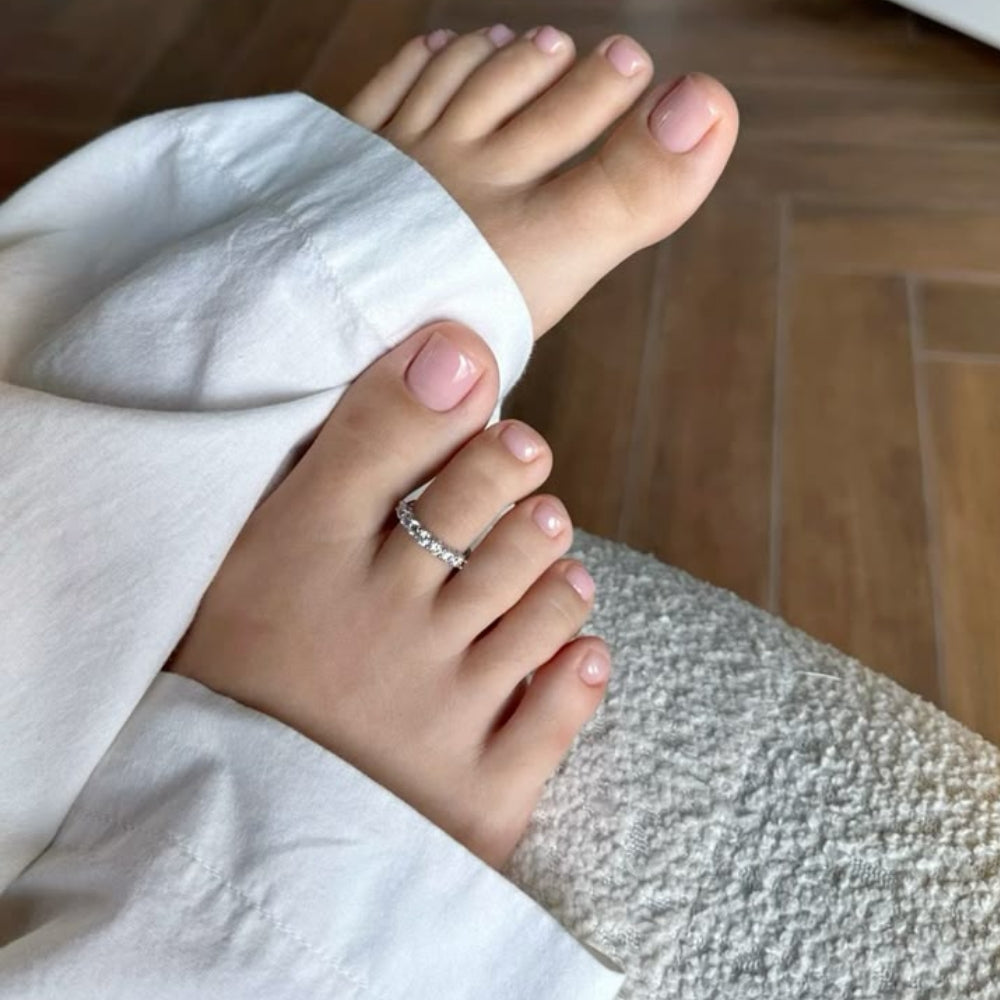When you have flat feet syndrome, choosing the right footwear becomes extremely important to reduce pain and improve comfort when moving. Many people still wonder what shoes to wear with flat feet to best support the feet and prevent related health problems. In this article, Shondo Blog will provide useful suggestions to help you choose the right shoes, thereby improving the quality of life and minimizing the uncomfortable symptoms caused by flat feet.
1. What shoes should people with flat feet wear?
Using suitable footwear is one of the effective methods to reduce pain and support treatment for people with flat feet. So how should people with flat feet syndrome choose shoes? According to experts, people with flat feet should choose shoes that fit well, such as sandals or sneakers.
In addition, shoes need to have a solid sole with an insole (cushion) to support the surface of the foot well. The sole should be flexible but not too soft, to provide good support when standing or walking, helping to reduce pressure on the foot and reduce pain in the ankles and knees.
Here are some good shoe styles for people with flat feet:
1.1 Sandals
Choose sandals with flexible, non-slip soles, with elastic or flip-flop designs for easy on and off.
A pair of sandals for people with flat feet should have a sturdy sole to distribute weight evenly across the foot, providing effective support and support. In particular, the shoe should have a cushioned heel for comfort and fit.
[caption id="attachment_4687" align="aligncenter" width="800"]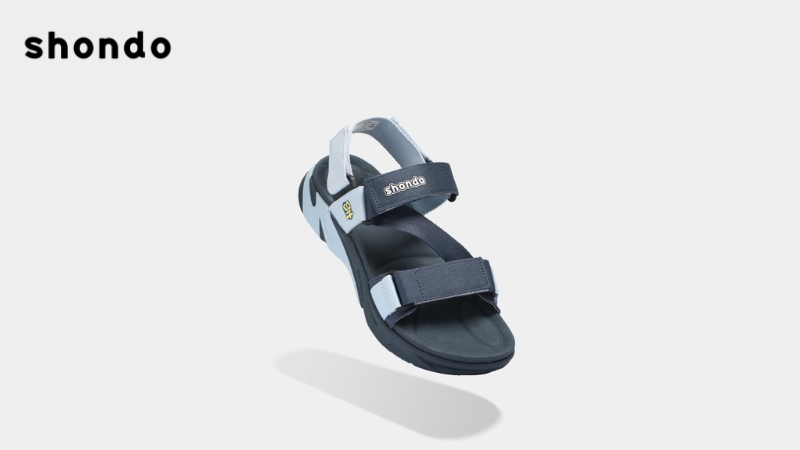 Shondo sandals are designed to be comfortable, durable and easy to remove[/caption]
>>>See more: What are sandals? All the information you need to know about sandals .
Shondo sandals are designed to be comfortable, durable and easy to remove[/caption]
>>>See more: What are sandals? All the information you need to know about sandals .
1.2 Running shoes
When choosing running shoes for athletes with flat feet, special care must be taken. First, a thorough assessment of foot shape, gait, and whether the arches are collapsed should be considered.
Collapsed arches often occur in people with damaged or stretched tendons. In this case, the arch needs to be properly supported until it fully heals.
Arch supports should not be used when running, especially for people with naturally flat feet. Using a support can create an unnatural shape for the foot, causing stress on the muscles and joints. Therefore, people with flat feet syndrome should choose running shoes without arch support.
Shoes with wide soles should be prioritized to help distribute pressure evenly across the foot. In addition, choosing the right insole helps reduce excessive pressure and absorb shock effectively.
1.3 Shoes with custom insoles
Typically, patients with flat feet syndrome will be prescribed a custom-made device, specifically a custom-made shoe insert. This insert is usually made from a plaster cast and is custom-fitted to the patient’s foot. This device helps correct the deformity and keep the foot in proper alignment.
Patients should consider choosing shoes with removable insoles to increase flexibility when using orthopedic devices. Choose shoes that fit well, with arch and heel support. These shoes are considered the best choice for people with flat feet syndrome.
[caption id="attachment_4688" align="aligncenter" width="800"] Shoes with custom insoles suitable for people with flat feet[/caption]
Shoes with custom insoles suitable for people with flat feet[/caption]
1.4 Slippers
In addition to the types of shoes already mentioned, flatfoot patients can also choose sandals or flip-flops. With a breathable and fitted design, these sandals help keep feet cool and comfortable. However, they may provide less support for the feet than shoes.
For added support, choose sandals with heel support and shock absorption, with a wide, sturdy sole. The midsole should be softer for comfort.
When choosing slippers to wear indoors, choose slippers with molded rubber soles, arch support, and a snug fit to the heel. A lightweight outer layer will help reduce pressure on the foot and reduce the load when moving.
Avoid using poorly designed sandals, as they do not provide enough support, increasing the risk of injury, pain, or causing other problems for people with flat feet.
2. How to choose shoes for people with flat feet
To choose the right shoes to help avoid pain and injury during exercise, people with flat feet should note the following:
- Shoes that fit properly: Always choose shoes that fit properly. Avoid shoes with pointed toes or narrow fronts, as these can cause discomfort.
- High and wide forefoot: An ideal shoe should have a high enough forefoot to allow for a comfortable fit and toes to spread out evenly, reducing pressure and injury to the forefoot. This also helps prevent pain and swelling when walking.
- Sturdy sole: Shoes should have a sturdy sole and good heel support. This design helps prevent the foot from rolling inward, supporting a stable posture and walking.
- Reinforced heels: Choose shoes with a reinforced heel and soft cushioning. This helps protect the heel, Achilles tendon, and other tendons in the foot, preventing strain or injury.
 The sole of the shoe is firmly reinforced[/caption]
The sole of the shoe is firmly reinforced[/caption]
- Low-heeled shoes: Choose shoes with low heels, good heel support, and soft cushioning. Avoid wearing high heels because they increase pressure on the forefoot and can damage tendons, negatively affecting the treatment of flat feet.
- Appropriate sports shoes: When choosing sports shoes, you should choose those without arch support, with a wide sole to distribute pressure evenly across the foot. At the same time, the shoes need to have appropriate cushioning to reduce pressure during movement and absorb shock effectively.
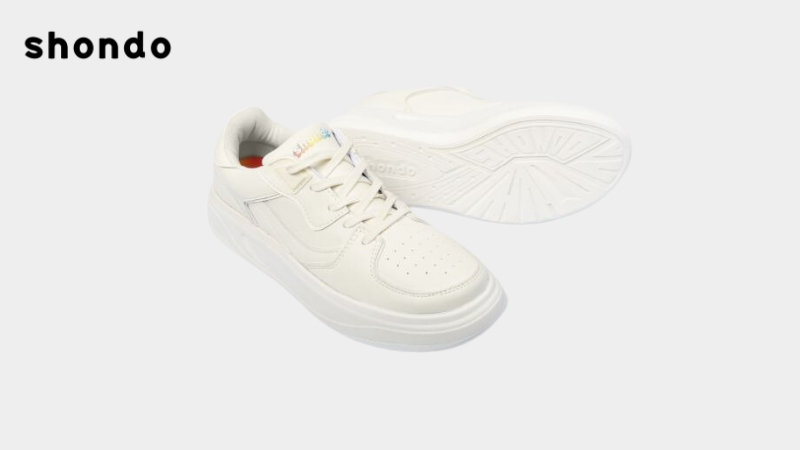 Comfortable sneakers[/caption]
Comfortable sneakers[/caption]
Each type of shoe will support different needs of the user. Once you understand which type of shoe is suitable for your feet, you can easily compare shoe styles, materials and prices. If you still cannot find the most suitable shoe, consult your doctor for advice and guidance.
3. Some recommended shoe brands for people with flat feet
There are many popular shoe brands that produce shoe models suitable for people with flat feet, including:
- Shondo: With soft sole sandal models, adjustable straps suitable for people with flat feet.
- ASICS: With models like the Gel-Kayano and GT-2000, ASICS is known for good arch support and soft cushioning.
- Brooks: Shoes like the Brooks Adrenaline GTS and Brooks Beast offer great support for people with flat feet.
- New Balance: Models like the New Balance 940 and 1540 are specially designed with great stability and good arch support.
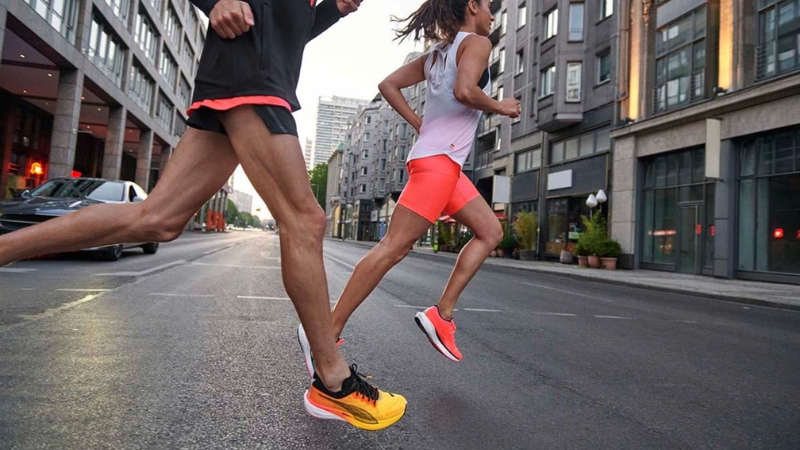 These sneakers are great for people with flat feet[/caption]
These sneakers are great for people with flat feet[/caption]
In short, choosing the right footwear is extremely important for people with flat feet syndrome. To ensure health and comfort, you should consider carefully when choosing shoes. Prioritize shoes with sturdy soles, arch support and good heel cushioning. If you are still wondering what shoes to wear with flat feet , do not hesitate to consult experts to have the best choice for your feet.
Related Articles

Nếu bạn đã và đang sở hữu cho mình đôi giày ballet sneaker nhưng vẫn chưa biết outfit nào phù hợp. Xem ngay bài viết này với 5 cách phối đồ với giày ballet sneaker đẹp không có điểm trừ cùng Shondo...

Squid Game 3 chính thức khuấy đảo trên màn ảnh, bạn đã sẵn sàng ngồi liền 6 tập để xem cuộc chiến sinh tồn lần cuối của Gi-Hun chưa? Dưới đây là combo cuối tuần “chuẩn sinh tồn hiện đại” mà Shondo ...

Phong cách Retro là gì mà được nhiều người săn đón như vậy? Cùng Shondo tìm hiểu qua bài viết sau đây để biết thêm nhiều điều thú vị từ điểm đặc trưng cho đến cách phối đồ như thế nào là chuẩn nhé....

Một trong những trào lưu nổi bật gây sốt trên các cộng đồng yêu thời trang chính là phong cách Maillard. Nhưng điều gì khiến chúng lại có sức hút lớn đến như vậy? Shondo sẽ giúp bạn hiểu rõ hơn về...

Áo Polo nữ - item nghe thì tưởng già nhưng thực ra lại đang quay trở lại mạnh mẽ. Từ sân golf đến sân trường, từ văn phòng đến quán cafe, chiếc áo đơn giản với cổ bẻ đặc trưng này bỗng trở nên đa n...
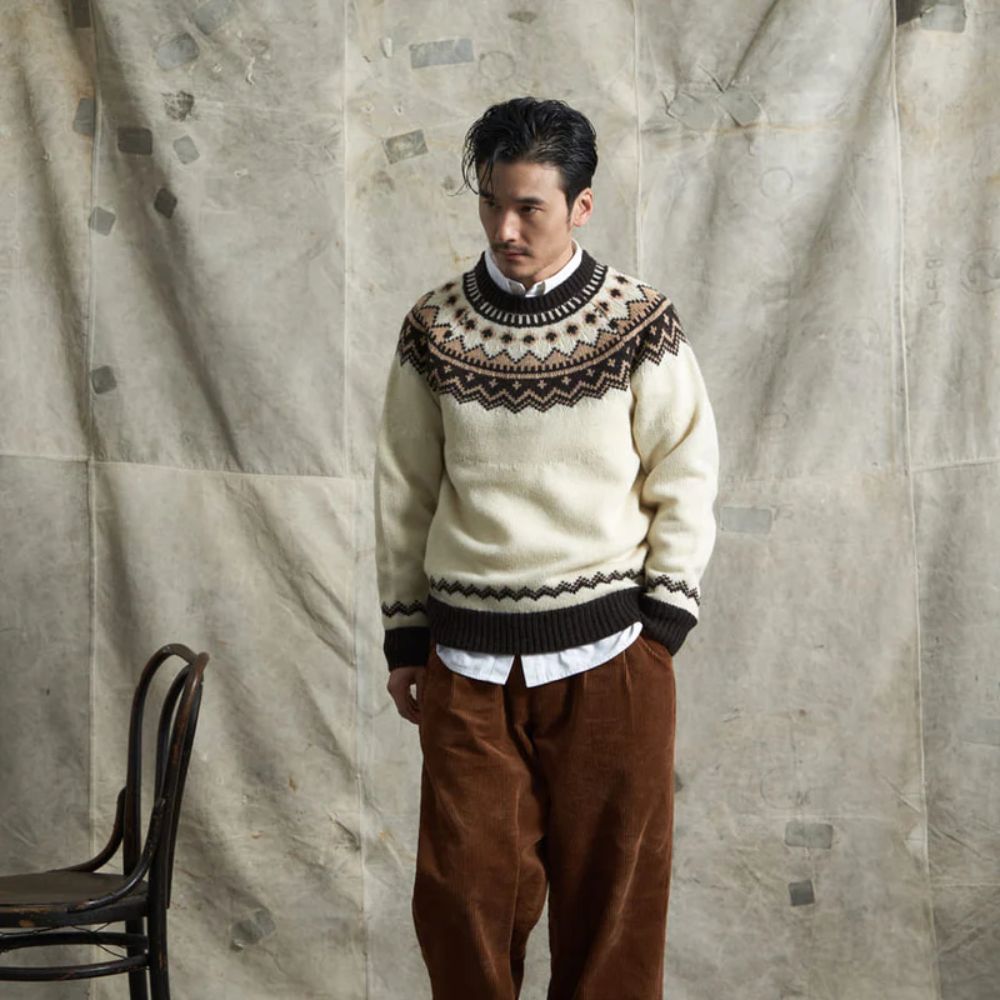
Phối đồ Vintage trong giới thời trang mang đến những nét độc đáo rất riêng. Phong cách này trở thành xu hướng phổ biến không chỉ ở nữ mà còn xuất hiện nhiều ở nam giới. Shondo sẽ cho bạn thấy điều ...

